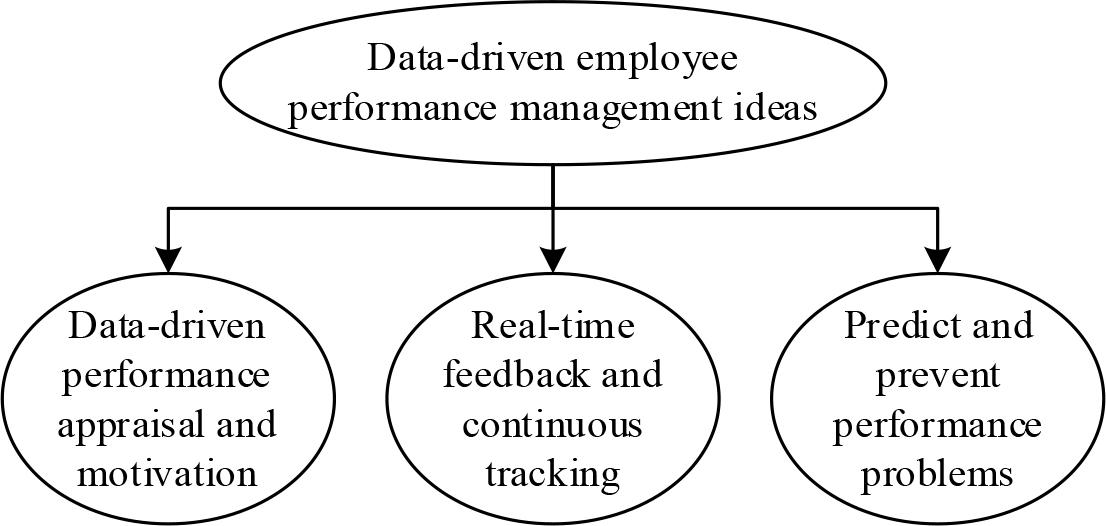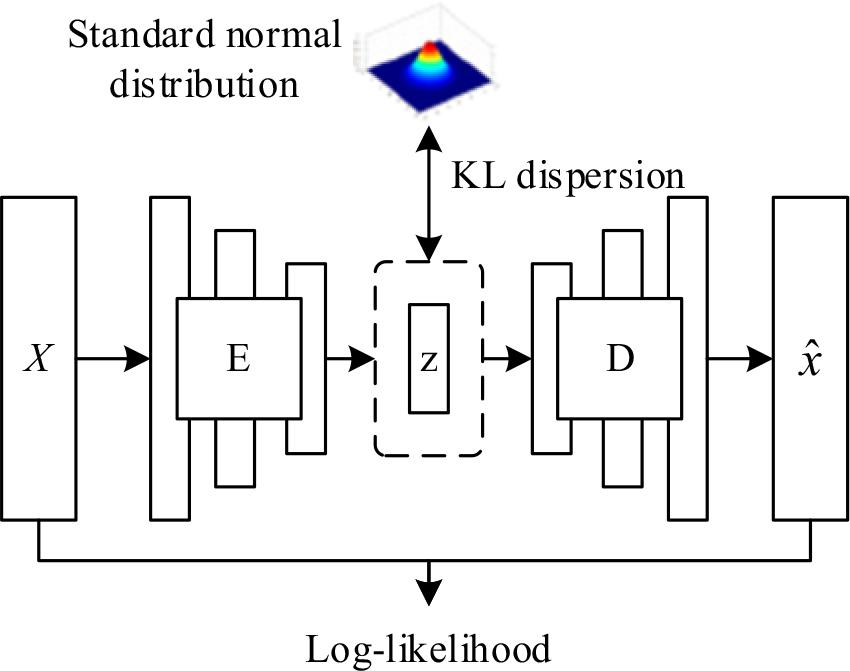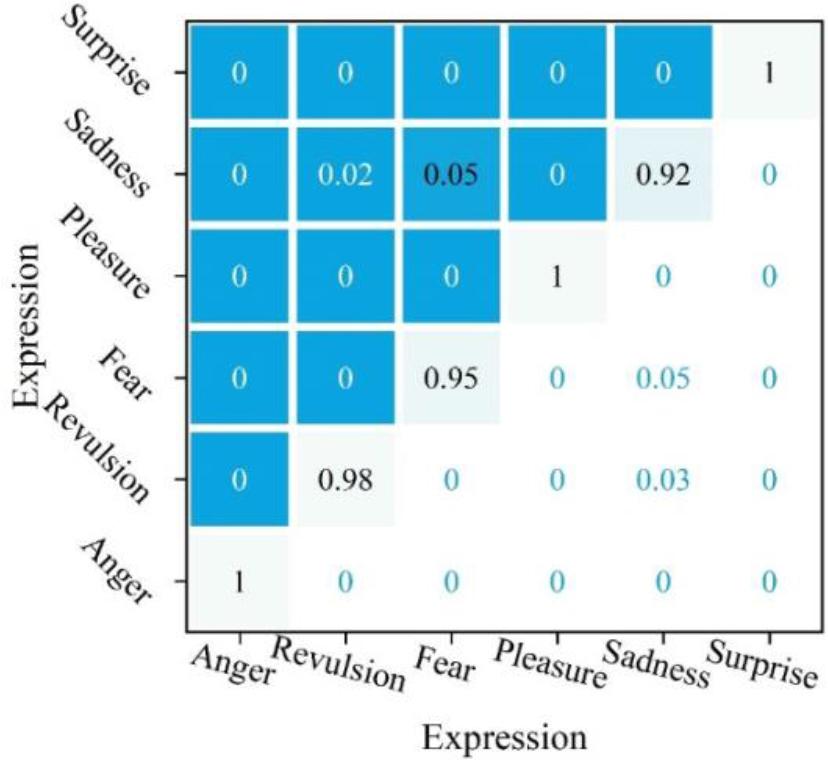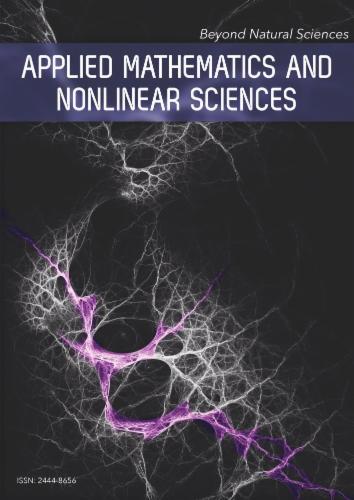Predicting HR Management Strategies and Employee Satisfaction in Enterprises Based on Deep Generative Models
05 févr. 2025
À propos de cet article
Publié en ligne: 05 févr. 2025
Reçu: 23 sept. 2024
Accepté: 26 déc. 2024
DOI: https://doi.org/10.2478/amns-2025-0043
Mots clés
© 2025 Ping Kang, published by Sciendo
This work is licensed under the Creative Commons Attribution 4.0 International License.
Figure 1.

Figure 2.

Figure 3.

Analysis of emotional baseline differences
| Sum of squares | Mean square | ||||
|---|---|---|---|---|---|
| Intergroup | 0.503 | 5 | 0.163 | 0.031 | 0.958 |
| Within group | 813.312 | 561 | 1.563 | - | - |
| Total amount | 814.253 | 568 | - | - | - |
Experimental results of dynamic image based on cohy kanade look house
| Expression | Test sample number | Correct number | Average recognition rate(%) | ||||
|---|---|---|---|---|---|---|---|
| Group 1 | Group 2 | Group 3 | Group 4 | Group 5 | |||
| Anger | 25 | 25 | 25 | 25 | 25 | 25 | 100% |
| Revulsion | 26 | 25 | 26 | 24 | 25 | 25 | 94.32% |
| Fear | 35 | 34 | 33 | 35 | 35 | 34 | 95.63% |
| Pleasure | 26 | 26 | 26 | 26 | 26 | 26 | 100% |
| Sadness | 25 | 24 | 22 | 22 | 21 | 22 | 92.57% |
| Surprise | 50 | 50 | 50 | 50 | 50 | 50 | 100% |
| Summarize | 187 | 184 | 182 | 182 | 182 | 182 | 98.72% |
The variance of the emotional baseline is tested
| F | df1 | df2 | sig |
|---|---|---|---|
| 2.531 | 4 | 567 | 0.095 |
Specific emotional start frequency statistics
| Group | Prediction scenario | Negative emotion(NA) | Positive emotion(PA) | ||||
|---|---|---|---|---|---|---|---|
| Anger | Unpleasure | Discontent | Pleasure | Excitation | Cheerfulness | ||
| Group 1(n=158) | Scenario 1 | 0 | 0 | 0 | 152 (85.23%) | 15 (8.1%) | 19 (6.67%) |
| Scenario 2 | 55 (26.11%) | 91 (45.33%) | 73 (28.56%) | 0 | 0 | 0 | |
| Scenario 3 | 0 | 0 | 0 | 111 (72.88%) | 27 (16.59%) | 21 (10.53%) | |
| Scenario 4 | 41 (24.35%) | 85 (51.99%) | 46 (26.66%) | 0 | 0 | 0 | |
| Group 2(n=144) | Scenario 1 | 0 | 0 | 0 | 131 (73.54%) | 28 (16.9%) | 22 (12.55%) |
| Scenario 3 | 0 | 0 | 0 | 119 (65.5%) | 32 (18.32%) | 24 (16.18%) | |
| Scenario 2 | 51 (27.45%) | 83 (44.52%) | 57 (28.03%) | 0 | 0 | 0 | |
| Scenario 4 | 47 (24.11%) | 83 43.21%) | 67 (32.68%) | 0 | 0 | 0 | |
The difference between the test emotion intensity
| Group | Emotional intensity prediction | Emotional baseline | t | d | |||
|---|---|---|---|---|---|---|---|
| M | SD | M | SD | ||||
| Group 1(n=158) | PA1 | 4.817 | 1.244 | 4.241 | 1.237 | 3.864 |
0.518 |
| NA2 | 4.75 | 1.674 | 3.452 |
0.355 | |||
| Group 2(n=144) | PA1 | 4.745 | 1.405 | 4.278 | 1.165 | 2.631 |
0.351 |
| NA2 | 4.77 | 1.651 | 2.225 |
0.274 | |||
| Group 3 (n=152) | PA1 | 4.829 | 1.265 | 4.373 | 1.152 | 2.912 |
0.314 |
| PA2 | 4.81 | 1.347 | 2.121 |
0.276 | |||
| Group 4 (n=164) | NA1 | 4.873 | 1.696 | 4.352 | 1.413 | 2.543 |
0.368 |
| NA2 | 4.83 | 1.547 | 2.751 |
0.388 | |||
Static image experiment results based on cohy kanade look library
| Expression | Test sample number | Correct number | Average recognition rate(%) | ||||
|---|---|---|---|---|---|---|---|
| Group 1 | Group 2 | Group 3 | Group 4 | Group 5 | |||
| Anger | 11 | 11 | 11 | 11 | 11 | 11 | 79.11% |
| Revulsion | 24 | 24 | 24 | 24 | 24 | 24 | 91.34% |
| Fear | 15 | 15 | 15 | 15 | 15 | 15 | 84.55% |
| Pleasure | 25 | 25 | 25 | 25 | 25 | 25 | 98.21% |
| Sadness | 50 | 50 | 50 | 50 | 50 | 50 | 100% |
| Surprise | 11 | 11 | 11 | 11 | 11 | 11 | 91.81% |
| Summarize | 143 | 136 | 136 | 136 | 137 | 137 | 93.52% |
Test of sequence effect of emotional prediction
| Group | Situation | Emotional type | Situational sort | N | Intensity prediction | Duration prediction | ||||||
|---|---|---|---|---|---|---|---|---|---|---|---|---|
| M | SD | t | sig | M | SD | t | sig | |||||
| Group 1(n=158) | Scenario 1 | PA1 | A | 79 | 4.955 | 1.235 | 1.757 | 0.448 | 4.41 | 1.83 | 1.744 | 0.159 |
| B | 79 | 4.678 | 1.228 | 3.96 | 1.988 | |||||||
| Scenario 2 | NA2 | A | 79 | 4.74 | 1.752 | 0.048 | 1.276 | 4.9 | 1.925 | 1.681 | 0.174 | |
| B | 79 | 4.76 | 1.602 | 4.46 | 1.988 | |||||||
| Group 2(n=144) | Scenario 3 | PA1 | A | 72 | 4.672 | 1.374 | -0.512 | 0.864 | 4.21 | 1.877 | 0.336 | 0.885 |
| B | 72 | 4.817 | 1.44 | 4.15 | 1.833 | |||||||
| Scenario 4 | NA2 | A | 72 | 4.8 | 1.632 | 0.369 | 1.154 | 5.18 | 1.911 | 1.34 | 0.329 | |
| B | 72 | 4.8 | 1.632 | 4.83 | 1.826 | |||||||
| Group 3 (n=152) | Scenario 1 | PA1 | A | 76 | 4.912 | 1.293 | 1.073 | 0.69 | 3.73 | 1.728 | -0.752 | 0.434 |
| B | 76 | 4.745 | 1.236 | 3.97 | 1.687 | |||||||
| Scenario 2 | PA2 | A | 76 | 4.86 | 1.246 | 0.586 | 0.992 | 3.46 | 1.985 | -1.139 | 0.26 | |
| B | 76 | 4.79 | 1.188 | 3.83 | 1.97 | |||||||
| Group 4 (n=164) | Scenario 3 | NA1 | A | 82 | 4.919 | 1.684 | 0.479 | 1.071 | 4.65 | 2.057 | -1.23 | 0.23 |
| B | 82 | 4.827 | 1.719 | 5.07 | 1.867 | |||||||
| Scenario 4 | NA2 | A | 82 | 4.88 | 1.56 | 0.494 | 1.059 | 4.81 | 1.683 | -0.306 | 0.719 | |
| B | 82 | 4.79 | 1.542 | 4.92 | 1.639 | |||||||
